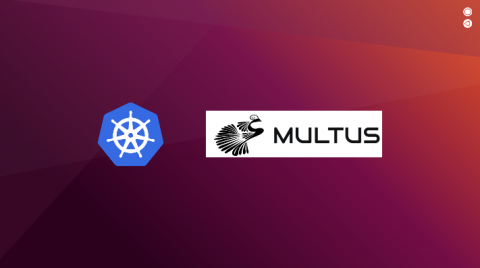Operations | Monitoring | ITSM | DevOps | Cloud
Canonical
MicroK8s now native on Windows and macOS
Windows and macOS developers can now use MicroK8s natively! Use kubectl at the Windows or Mac command line to interact with MicroK8s locally just as you would on Linux. Clean integration into the desktop means better workflows to dev, build and test your containerised apps. MicroK8s is a conformant upstream Kubernetes, packaged for simplicity and resilience. It provides sensible defaults and bundles the most commonly used components for at-your-fingertips access.
Open source software for open infrastructure
Implementing infrastructure using open-source software significantly reduces the total cost of ownership (TOC) of your infrastructure. Over the last few years, we’ve seen more and more companies moving to open source. These include Netflix, Uber, Visa, eBay, Wikipedia and AT&T. And this trend will only continue to grow. The migration is driven by better economics, improved flexibility, better integration capabilities and thus, the higher business value provided by the open source software.
What's the deal with edge computing?
With over 41 billion IoT devices expected to be active by 2027 — that’s at least 5 devices for every person on the planet — edge computing has emerged as a tenable solution to prevent the impending snowballing of network traffic. Allow me to lift the veil on this buzzword and explain why it’s been gaining attention in tech circles lately.
Multus: how to escape the Kubernetes eth0 prison
Kubernetes has been successful for a number of reasons, not the least of which is that it takes care of things that application developers may not want to bother with – such as, for example, networking. Multus is a feature that can be used on top of Kubernetes to enable complex networking use cases.
Hybrid cloud and multi-cloud: what is the difference?
Hybrid cloud and multi-cloud are two exclusive terms that are often confused. While the hybrid cloud represents a model for extending private cloud infrastructure with one of the existing public clouds, a multi-cloud refers to an environment where multiple clouds are used at the same time, regardless of their type. Thus, while the hybrid cloud represents a very specific use case, multi-cloud is a more generic term and usually better reflects reality.
Ubuntu on WSL 2 Is Generally Available
Today Microsoft announced the general availability of Windows Subsystem for Linux 2 in the Windows 10 May 2020 update. WSL 2 is based on a new architecture that provides full Linux binary application compatibility and improved performance. WSL 2 is powered by a real Linux kernel in a lightweight virtual machine that boots in under two seconds. WSL 2 is the best way to experience Ubuntu on WSL.
ZFS focus on Ubuntu 20.04 LTS: what's new?
Ubuntu has supported ZFS as an option for some time. In 19.10, we introduced experimental support on the desktop. As explained, having a ZFS on root option on our desktop was only a first step in what we want to achieve by adopting this combined file system and logical volume manager. I strongly suggest you read the 2 blog posts, linked above, as introductions to this blog series we are starting. Here we cover what’s new compared to 19.10 in term of installation and general features.
Kubernetes for Data Science: meet Kubeflow
Data science has exploded as a practice in the past decade and has become an undisputed driver of innovation. The forcing factors behind the rising interest in Machine Learning, a not so new concept, have consolidated and created an unparalleled capacity for Deep Learning, a subset of Artificial Neural Networks with many “hidden layers”, to thrive in the years to come.











